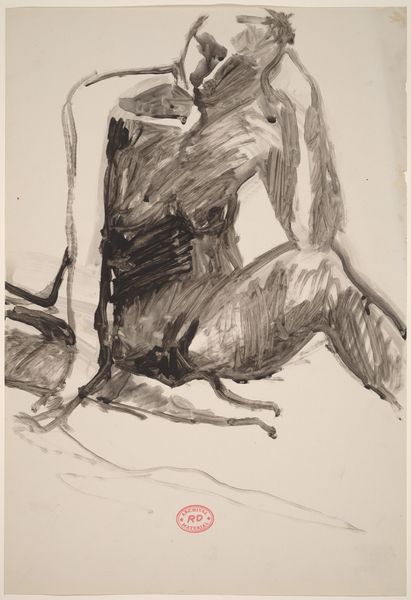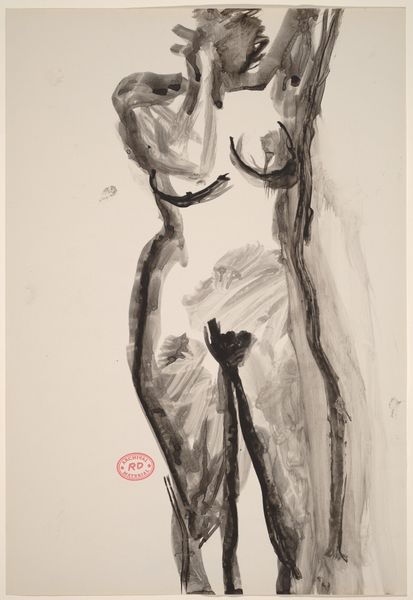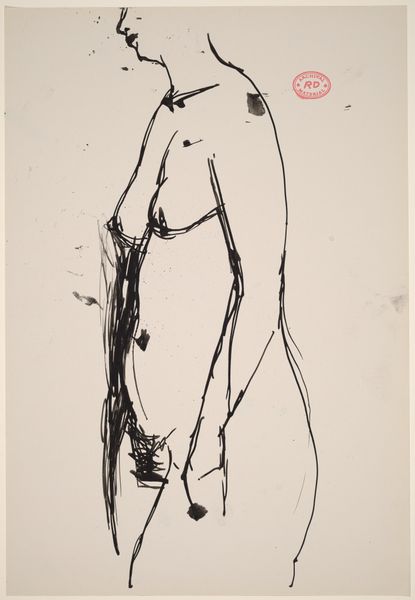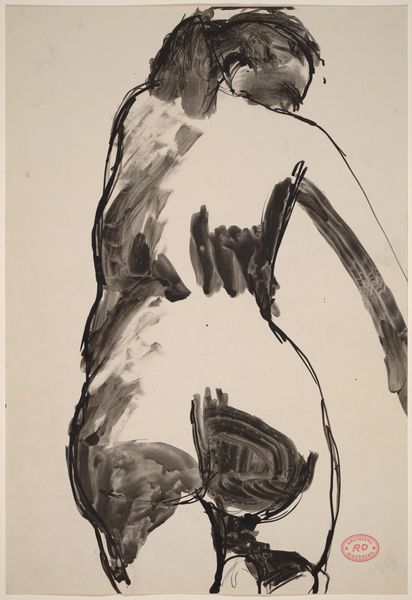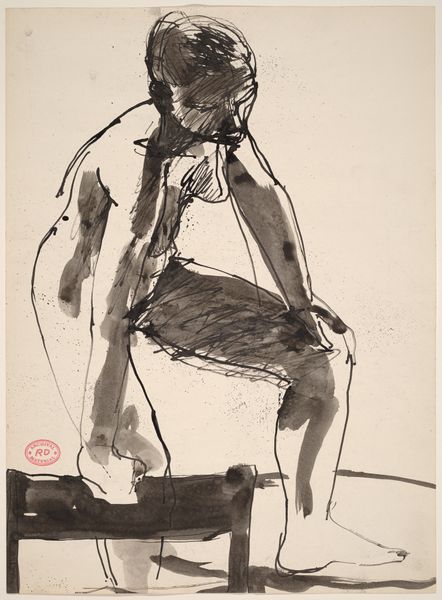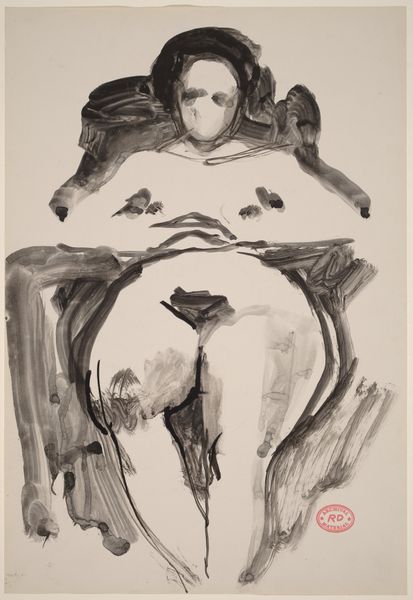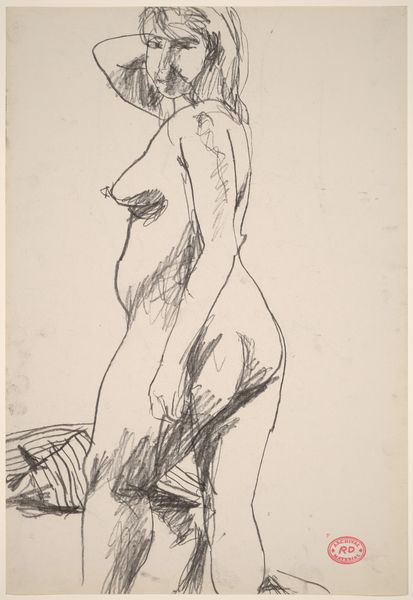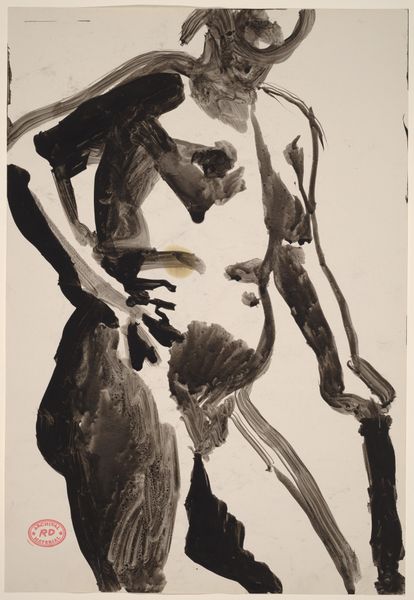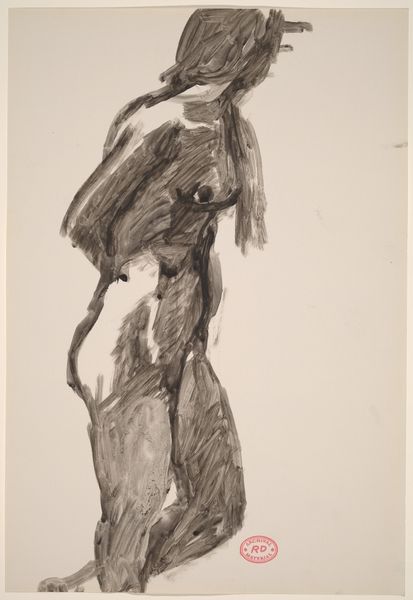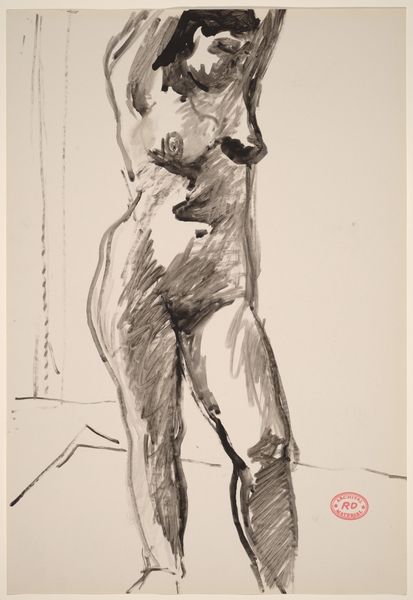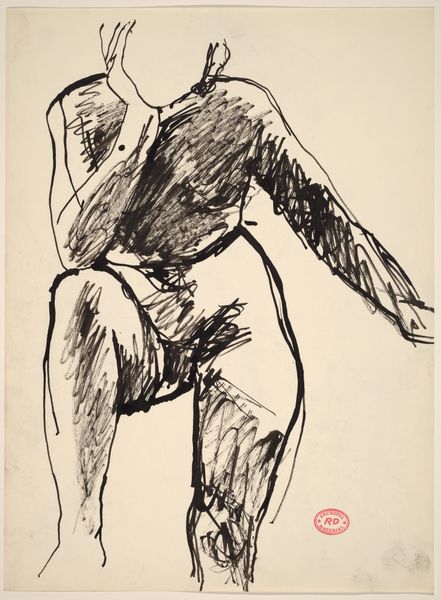![Untitled [standing nude with her arms raised] by Richard Diebenkorn](/_next/image?url=https%3A%2F%2Fd2w8kbdekdi1gv.cloudfront.net%2FeyJidWNrZXQiOiAiYXJ0ZXJhLWltYWdlcy1idWNrZXQiLCAia2V5IjogImFydHdvcmtzLzY0MmI0MjMzLTdlODktNGMxYi04YmIzLTU0ZDJiMDk1NjAyZC82NDJiNDIzMy03ZTg5LTRjMWItOGJiMy01NGQyYjA5NTYwMmRfZnVsbC5qcGciLCAiZWRpdHMiOiB7InJlc2l6ZSI6IHsid2lkdGgiOiAxOTIwLCAiaGVpZ2h0IjogMTkyMCwgImZpdCI6ICJpbnNpZGUifX19&w=3840&q=75)
drawing, ink
#
abstract-expressionism
#
drawing
#
figuration
#
bay-area-figurative-movement
#
ink
#
nude
Dimensions: overall: 37.2 x 47 cm (14 5/8 x 18 1/2 in.)
Copyright: National Gallery of Art: CC0 1.0
Editor: Here we have Richard Diebenkorn's ink drawing, “Untitled [standing nude with her arms raised]”, from 1956. There’s something really striking about the boldness of the brushstrokes, how stark and fragmented the figure is. What’s your take on this piece? Curator: You know, it whispers to me of freedom. It's raw, isn't it? Diebenkorn, he wasn’t just copying what he saw, but wrestling with it. It's like a fleeting memory of the body, a trace of form rather than a solid declaration. The negative space is almost as potent as the ink itself, giving the figure room to breathe. Do you feel that tension between presence and absence? Editor: I do. It's there and then almost not there, fading. What's fascinating to me is how confidently those lines are placed; even unfinished, it feels complete. Was this typical of Diebenkorn’s drawing style at the time? Curator: In the mid-50s, he was dancing right on the edge between abstraction and figuration. The Bay Area Abstract Expressionists often did. There's this delicious push and pull – you see the body, you feel the space, and then BAM!, it dissolves into these confident, expressive marks. It feels more like a jazz riff on a nude than a classical study, doesn’t it? Editor: Definitely, there's a rhythm to it. So, seeing the body as both present and fading is Diebenkorn saying something about…memory? About capturing the ephemeral nature of form? Curator: Maybe. Or maybe he's just inviting us to truly *see*. Not to passively accept what's presented, but to actively participate in creating the image. And that, my friend, is where the magic lives. What do you think, do you feel invited? Editor: I do now! That really brings new appreciation to Diebenkorn’s artistic goals!
Comments
No comments
Be the first to comment and join the conversation on the ultimate creative platform.
